Sri Rudram is a cornerstone of Vedic literature and spirituality. It is revered for its depth and mystical beauty. Sri Rudram Lyrics comprise several components that together form a comprehensive worship framework. It is part of the Krishna Yajurveda, and it’s known formally as the Rudra Prashna.
A profound tapestry of devotion, mysticism, and lore, woven into verses that chanters recite to venerate Lord Shiva, the Rudram brings forth a host of benefits for devotees, across spiritual and material realms, if chanted on a regular basis.
Sri Rudram’s lyrics comprise two main parts,
Namakam – the heart of Sri Rudram, focuses on praising Lord Shiva through his many aspects and forms.
Chamakam – enumerates the various things one would want in life and requests Rudra to grant them to the devotee.
The Sri Rudram Vedic ritual framework also consists of the integral components called ‘Laghunyasam’ and ‘Mahanyasam’. These texts serve as preparatory and purificatory rituals that set the stage for the recitation of Sri Rudram.

Let’s break down the essentials of Laghunyasam, Mahanyasam, Namakam, and Chamakam, offering a glimpse into their significance and what they contribute to the spiritual tapestry.
Laghunyasam & Mahanyasam
Sri Rudra Laghunyasam and Mahanyasam are integral components of the Vedic ritual framework, especially in the context of Sri Rudram.
These texts serve as preparatory and purificatory rituals that set the stage for the recitation of Sri Rudram, enhancing the spiritual ambiance and aligning the devotee with the divine energies of Lord Shiva (Rudra).
It’s about tuning in, and getting spiritually aligned before diving into the deeper aspects of the prayer. Think of it like warming up before a workout, it gets you in the right state of mind and spirit.
Let’s dive into what these are and how they connect to Sri Rudram.
What Is Laghunyasam?
“Laghu” + “Nyasa” = “Short” + “Placement”: Laghunyasam is essentially a shorter version of the Nyasa ritual. “Nyasa” involves invoking divine presence into various parts of the body through specific mantras and gestures, effectively turning the body into a sacred vessel for worship.
Laghunyasam, being the condensed form, is a quicker way to prepare oneself for the sacred recitation of Sri Rudram.
Spiritual Alignment: It’s about aligning one’s physical and spiritual self with the cosmos, recognizing the body as a microcosm of the universe.
By performing Laghunyasam, devotees seek to purify themselves and become fit to offer prayers to Lord Shiva.
What Is Mahanyasam?
“Maha” + “Nyasa” = “Great” + “Placement”: As the name suggests, Mahanyasam is a more elaborate and comprehensive version of Nyasa.
It involves a detailed ritual where the devotee invokes the presence of the divine in the entire universe, as well as in each part of the body, through a series of mantras and mudras (hand gestures).
Deep Purification & Connection: Mahanyasam is a preparatory ritual that seeks to purify not just the individual but also the surroundings, creating a conducive environment for the sacred chants that follow.
It’s a way of extending the spiritual preparation to a cosmic level, inviting Lord Shiva’s presence in everything around and within the devotee.
What Is Sri Rudram Lyrics (Namakam) & What Does It Convey?
The lyrics of Sri Rudram convey rich themes, emotions, and spiritual insights, deeply embedded in the Vedic tradition. Rather than being a simple prayer, Sri Rudram is a multifaceted hymn that touches upon various aspects of life, the universe, and the divine.
The Namakam has 11 Anuvākas. Each Anuvāka has its unique focus and set of invocations, together forming a comprehensive spiritual invocation and prayer.
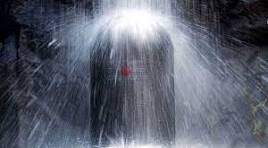
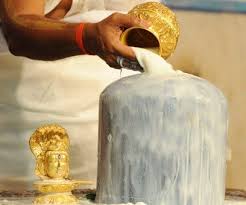
Let’s unpack the essence of what these lyrics are all about, keeping it casual and straightforward.
Acknowledgment of The Divine’s Dual Nature
- Respect For Power: At its core, Sri Rudram Lyrics recognizes the formidable and fearsome aspect of Lord Shiva (Rudra) — his role as the destroyer.
- Seeking Protection & Blessings: But then, it flips the script, asking for his protection and blessings. It’s a bit like telling a powerful storm, “We know you can be wild, but please be kind to us.”
A Plea For Universal Well-being
- Harmony & Peace: The hymn goes beyond personal requests, seeking peace, prosperity, and well-being for all beings. It’s not just about “me” or “you”, it’s an all-encompassing plea for everyone and everything.
- Removal of Suffering: There’s a strong emphasis on removing suffering, clearing obstacles, and ensuring safety. It’s a universal wish list for a trouble-free life, directed at a cosmic level.
Recognition of The Natural World
- Connection With Nature: Sri Rudram also highlights the connection between the divine and the natural world. It acknowledges various elements of nature as manifestations of Shiva’s presence.
So, in a way, it’s also a nod to environmental consciousness, recognizing the sanctity of rivers, mountains, herbs, and animals.
Spiritual Aspirations & Desires
- Seeking Forgiveness & Purity: The lyrics convey a desire for inner purification and forgiveness for any misdeeds. It’s about seeking a clean slate, both spiritually and morally.
- Aspiration For Liberation: There’s a subtle undercurrent of seeking liberation or Moksha, indicating a desire to transcend the cycle of birth and death, aiming for a union with the divine.
Universal Brotherhood and Compassion
- Inclusivity: Sri Rudram doesn’t discriminate. It encompasses all — friends, foes, and the animal kingdom, emphasizing universal love and compassion. It’s a kind of ancient “love all, serve all” message.
The Power of Sacred Sounds
- Vibrational Healing: Beyond the literal meaning, the chant is believed to create powerful vibrations that promote healing, protection, and spiritual awakening. It’s like sonic therapy, where the sound itself has a profound impact.
A Philosophical Reflection
- Non-duality (Advaita Vedanta): At a deeper level, Sri Rudram reflects the philosophy of non-duality, suggesting that the individual soul and the universal consciousness (Shiva) are one. It’s a reminder of our interconnectedness with the divine and everything around us.
In summary, the lyrics of Sri Rudram are a blend of devotion, respect, awe, and an appeal for compassion and liberation. It’s a dialogue with the divine, seeking blessings not just for oneself but for all of creation, reflecting a deep understanding of life’s complexities and a yearning for universal harmony.
What Is Sri Rudram Lyrics (Chamakam) & What Does It Convey?
The Chamakam, officially known as the Śrī Rudram Chamakam, is the second part of the Śrī Rudram, one of the most significant hymns in the Yajurveda.
Following the Namakam, which is a prayer to pacify Rudra’s fierce aspects and seek his protection, the Chamakam adopts a different tone. It’s essentially a dynamic invocation that asks for blessings, not just for individual gain but for the universal good.
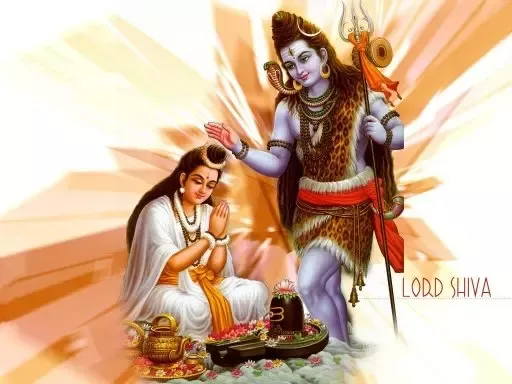
Structure & Content
The Chamakam is structured around a series of requests made to Rudra, each ending with “Chame” (hence the name Chamakam), which means “and to me [may you grant].”
These requests are fascinating because they cover a broad spectrum, from material wealth, health, and prosperity to more spiritually oriented gifts like wisdom, insight, and ultimately, liberation or moksha.
What It Conveys?
- Material Blessings: The initial portions of the Chamakam focus on worldly desires—food, health, wealth, progeny, and long life. It acknowledges the human need for security, comfort, and continuity, which are seen as legitimate requests to the divine.
- Spiritual Aspirations: As the chant progresses, the focus subtly shifts towards spiritual aspirations. It seeks blessings for wisdom, protection from ignorance, and the removal of obstacles on the path to enlightenment.
This transition reflects a deep understanding of human life as a journey from material needs to spiritual liberation. - Universal Well-being: One of the most profound aspects of the Chamakam is its emphasis on universal well-being.
It asks for blessings not just for the individual but for all beings, demonstrating an inclusive vision of prosperity and peace that encompasses the entire creation. - Harmony With The Cosmos: The Chamakam also expresses a desire for harmony with the natural and cosmic order.
It seeks the grace of the divine in all aspects of existence, from the elements to the celestial bodies, indicating a holistic view of life where the individual is in sync with the universe. - A Path To Ultimate Liberation: Ultimately, the Chamakam points towards the highest goal of human life according to Vedic philosophy—liberation (moksha) from the cycle of birth and death.
By asking for a wide range of blessings, it acknowledges that every aspect of human life, from the mundane to the sublime, can be a step on the path to liberation when pursued with awareness and devotion.
In Summary, the Chamakam, through its unique blend of requests, offers a comprehensive vision of human life, where material needs and spiritual aspirations are not seen as contradictory but as parts of a whole.
It conveys a deep-seated belief in the generosity of the divine, ready to grant all forms of blessings to those who ask with sincerity.
This hymn, thus, is not just a plea for personal gain but an acknowledgment of the interconnectedness of all existence, and a reminder that the ultimate goal of life transcends the material to reach spiritual unity with the divine.
The Synergy – Sri Rudram Framework (Laghunyasam, Namakam & Chamakam
- A Complete Spiritual Experience: Together, Laghunyasam or Mahanyasam, Namakam, and Chamakam offer a holistic spiritual experience.
Starting with the alignment and invocation in Laghunyasam, moving through the devotion of Namakam, and culminating in the comprehensive asks of Chamakam, the trio encapsulates a journey from preparation to realization. - Balance and Harmony: This structure reflects a deep understanding of human nature and spiritual pursuit, acknowledging the importance of material needs while guiding towards the ultimate goal of unity with the divine.
It’s a journey from acknowledging the vastness of the divine (Namakam) to expressing personal desires and aspirations (Chamakam), all while being rooted in a consciousness that transcends the individual self (Laghunyasam/Mahanyasam).
In essence, the interplay of Laghunyasam, Namakam, and Chamakam in Sri Rudram creates a comprehensive framework for devotion, reflection, and self-realization. It’s a spiritual journey that balances reverence with personal growth, and material desires with the quest for enlightenment, making it an integral aspect of Vedic wisdom and practice.
How & When To Chant Sri Rudram?
Sri Rudram is performed in various formats, each with its own scale, significance, and spiritual impact.
Sri Rudram can be chanted along with the yagna ceremony, or without it in the form of Japa. Let’s dive into each of these methods to understand their uniqueness:
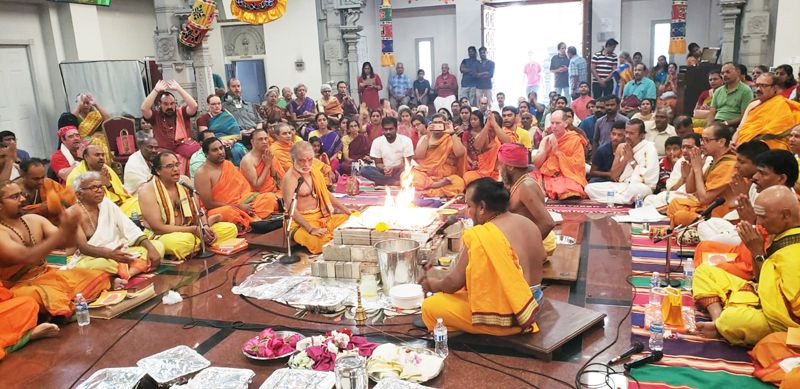
| Sri Rudram Chanting | Chanting Procedure | When to Chant? |
| Roopam Rudram | Namakam recitation– 1 round, followed by Chamakam recitation – 1 round | Individual Chanting at home (Daily, on Mondays, Pradosha days) |
| Ekadasha Rudram | Namakam recitation – 11 rounds, Chamakam recitation- one Anuvaka after each round of Namakam | Individual or group chanting on special occasions. |
| Laghu Rudram | 11 rounds of Ekadasha Rudram (121 Namakam recitations, 11 Chamakam recitations) | Chanted by several persists during special poojas or ceremonies. |
| Maha Rudram | 11 rounds of Laghu Rudram (1331 Namakam recitations, 121 Chamakam recitations) | Chanted during significant religious festivals, and temple events by several priests |
| Ati Rudram | 11 rounds of Maha Rudram (14641 recitations of the Namakam and 1331 recitations of Chamakam) | The highly auspicious event, chanted by several priests for several days for world peace and for human welfare. |
Impact of Chanting Sri Rudram Lyrics
These varying scales of Rudram recitation reflect the adaptability of spiritual practices to different contexts, from individual devotion to grand, community-oriented ceremonies, each with the power to transform and uplift.
- Spiritual Intensity: As the scale of recitation increases from Rudram to Ati Rudram, so does the intensity and the spiritual energy generated by the chants. Each format serves a specific purpose, from personal devotion and spiritual progress to seeking blessings for the community and the world.
- Community Involvement: Larger formats like Maha Rudram and Ati Rudram bring together communities, fostering a sense of unity, devotion, and collective spiritual upliftment.
- Divine Connection: Regardless of the scale, each method of recitation deepens the connection with the divine, aligning the chanters and the participants with the cosmic energies of Lord Shiva.
What Our Scriptures Say About Sri Rudram?
Sri Rudram, celebrated for its spiritual depth and potency, is glorified not just in the Yajurveda from which it originates but also referenced and esteemed across various other Hindu scriptures, Upanishads, and texts.
This reverence across multiple texts emphasizes its significance in the Hindu spiritual tradition. Let’s explore some of the scriptures that glorify or reference Sri Rudram:
Vedas
- Yajurveda
Primary Source: Sri Rudram is found in the Taittiriya Samhita of the Krishna Yajurveda. It is the original source of the hymn, comprising two parts: the Namakam (Chapter 16 of the fourth Kanda) and the Chamakam (Chapter 7 of the fourth Kanda). The Yajurveda itself extols the hymn for its power to cleanse sins and grant boons.
Puranas
- Shiva Purana
Shiva’s Favorite: The Shiva Purana, dedicated to the glory of Lord Shiva, mentions the Sri Rudram as one of Shiva’s favorite hymns. It is said that reciting Sri Rudram with devotion pleases Shiva immensely, leading to blessings of health, wealth, and ultimately moksha (liberation).
- Padma Purana
Benefits of Recitation: The Padma Purana outlines the benefits of reciting Sri Rudram, emphasizing its efficacy in removing sins and obstacles in life. It suggests that Sri Rudram chanting is a potent spiritual practice for devotees seeking grace and protection from Lord Shiva.
- Skanda Purana
Merit of Listening: The Skanda Purana highlights the merit gained by not just reciting but also listening to Sri Rudram. It is considered a purifying act, capable of cleansing the soul and leading to a higher spiritual plane.
- Linga Purana
Path To Shiva: The Linga Purana asserts that Sri Rudram chanting is a direct path to experiencing the divine essence of Lord Shiva. It underscores the hymn’s power in uniting the devotee with the supreme consciousness.
- Kurma Puranam
Bhasmoddholitha sarvango rudradhyayana thatparah aradhyaan harih Sambhum krutwa pasupatam vratam
Lord Hari embraced the practice of Pasupata Vrata, offering his devotion to Shambu (Shiva) through the chanting of the Sri Rudra Mantra. His body was entirely covered in sacred ash, vibhuti.
- Mahabharata
Krishna’s Recommendation: In the epic Mahabharata, Lord Krishna recommends the recitation of Sri Rudram to Arjuna as a means to appease Lord Shiva. It is cited as an earnest spiritual practice, capable of granting divine vision and strength.
Rudrajapi vimuchyathei mahapathakapankarath
Samyak jnanam cha labhate thena muchyet bandhanath
Anena Sadrusam japyam nasthi satyam sruthow smruthow
The individual who recites Sri Rudra is liberated from the shackles of mahapatakas (grave sins), attains profound knowledge, and through this wisdom, is freed from all forms of bondage. Indeed, within the realms of the Srutis and Smritis, there exists no parallel to Sri Rudram in terms of its suitability and potency for chanting.
- Manusmriti
Purification and Protection: The Manusmriti, an ancient legal text, mentions the benefits of reciting Vedic hymns like Sri Rudram for purification and protection from negative influences. While it does not mention Sri Rudram explicitly, the general endorsement of Vedic chanting encompasses the recitation of powerful hymns like Sri Rudram.
Various Upanishads
Philosophical Echoes: Though not directly mentioning Sri Rudram, several Upanishads echo its themes of the omnipresence of the divine, the unity of the soul with the universal spirit, and the transformation through realizing this unity.
The philosophies underpinning Sri Rudram are in harmony with the core teachings of the Upanishads.
- Kaivalya Upanishad (Last 2 verses)
“Yah Sátarudriyamadhite so’agniputo bhavati Surapanatputo bhavati brahmahatyatputo bhavati Kkrtyakrtyatputo bhavati tasmadavimuktamasrito bhavati atyasrami sarvada sakrdva japat“
The individual who engages in studying the Satarudriya (Sri Rudram) undergoes purification akin to having conducted a fire ritual; such a person is cleansed of the effects of consuming alcohol, absolved from the guilt of Brahminicide, and cleared of the wrongdoing of theft.
Consequently, achieving liberation, they merge with the Absolute (Brahman). This person attains the status of an ascetic (atyasrami), perpetually liberated, with even a single recitation serving for his profound transformation.
- Jabala Upanishad Section 3 verse 2.
Kim Japyena amrutatvam no bruhi ithi
“Tell us by what holy recitation (japa) one attains immortality”?
Sa ho vaacha Yagnyavalkya Satarudreeyaneti
Yajnavalkya replied “BY JAPA of Satarudreeya”
एतानि ह वा अम्रुतस्य नामधेयानि एहतैर्हवा भवति
“These are the names of the immortal one. Reciting these, one verily attains immortality.”
These references across scriptures not only highlight the spiritual importance of Sri Rudram but also its universal appeal in Hinduism’s vast religious and philosophical landscape.
The hymn’s ability to connect the individual’s soul with the cosmic existence of Lord Shiva is a testament to its enduring significance.
Conclusion
Ever since Vedic times, Sri Rudram has captivated the hearts and minds of devotees all across this great nation, and it continues to go strong with its potent powers and profound impact even today.
It certainly isn’t easy to chant and is not everyone’s cup of tea, but for those who manage to understand its importance and dedicate time for this in their lives, great changes and transformations lie ahead.
A systematic study of the lyrics, their meanings, and internalizing the same is a start for chanting Sri Rudram and goes a long way in further strengthening the mantra’s effects on the individual psyche.
In this article, we’ve tried to do just that, with two more articles picking up from here, covering both the Namakam and Chamakam, respectively.
- Krishnashtakam – “Krishnam Vande Jagadgurum” – Lyrics & Meaning - April 4, 2024
- Karadarshanam – “Karagre Vasate Lakshmi” – Meaning & Benefits - March 26, 2024
- Spiritual Meaning of Smelling Smoke – Here Is What It Means? - March 20, 2024

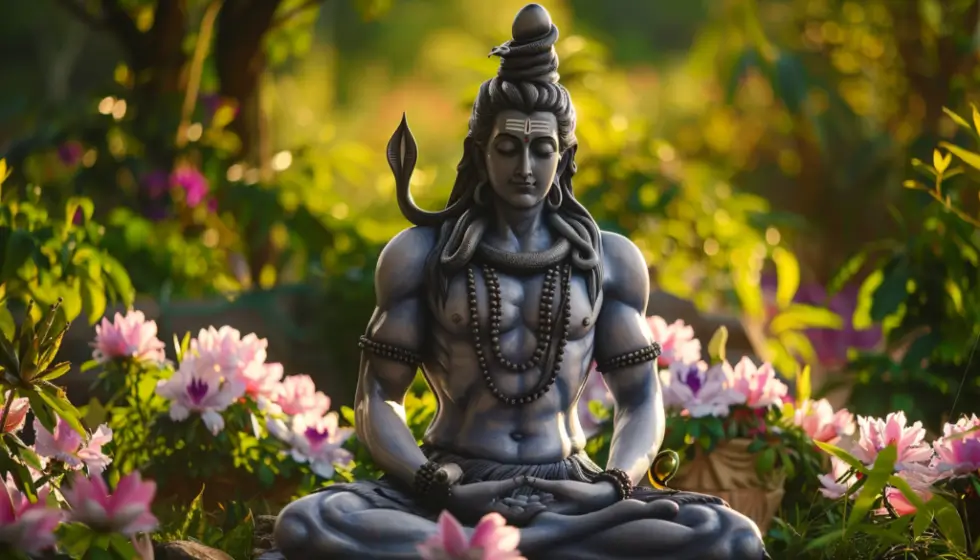
0 Comments